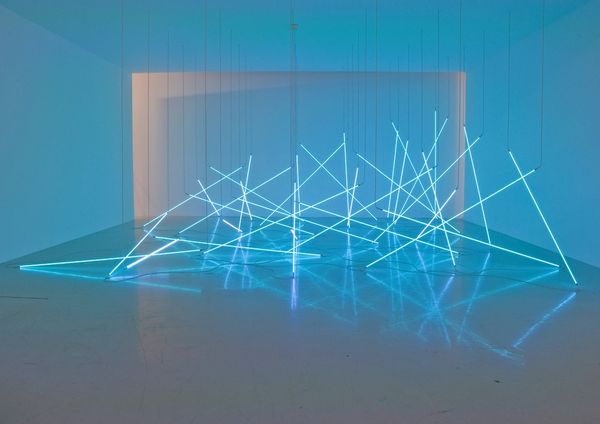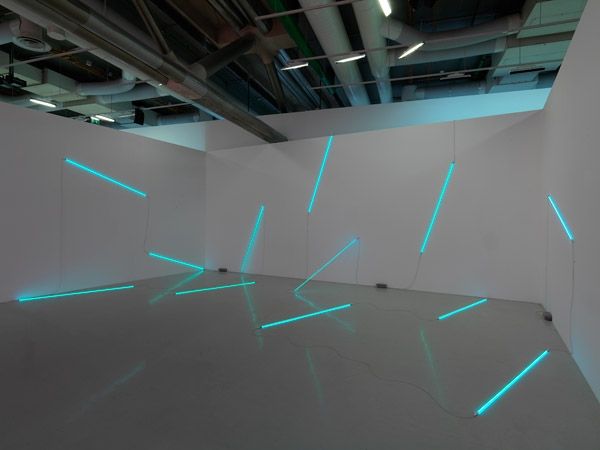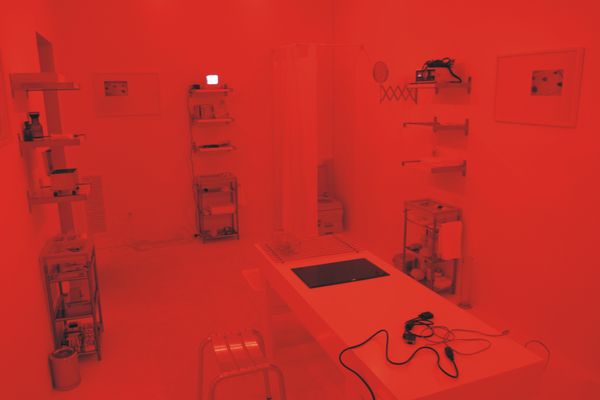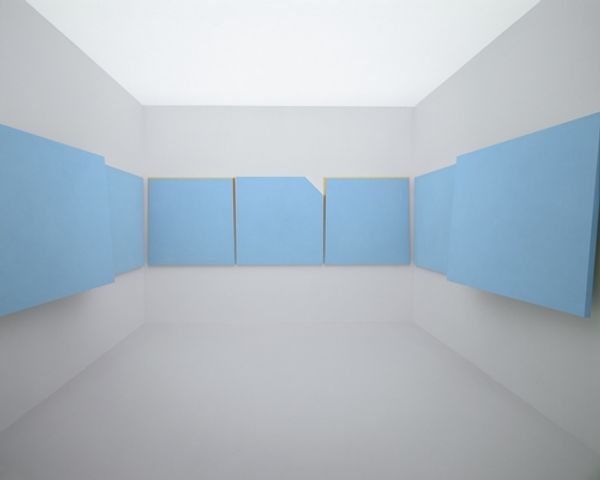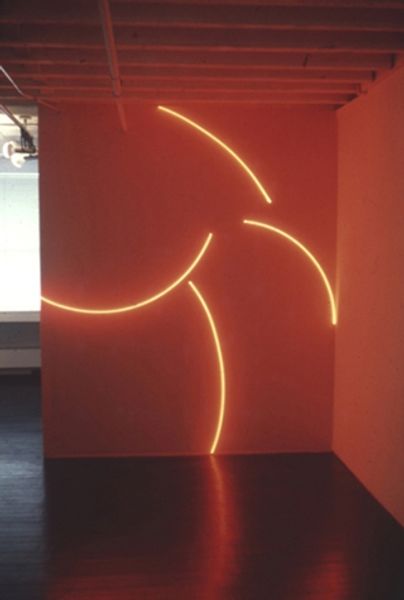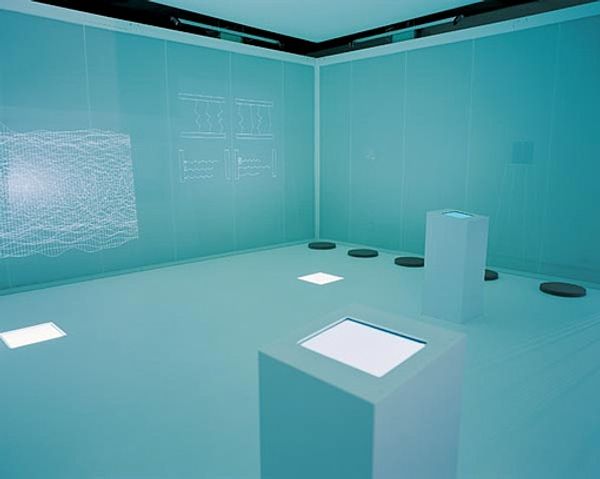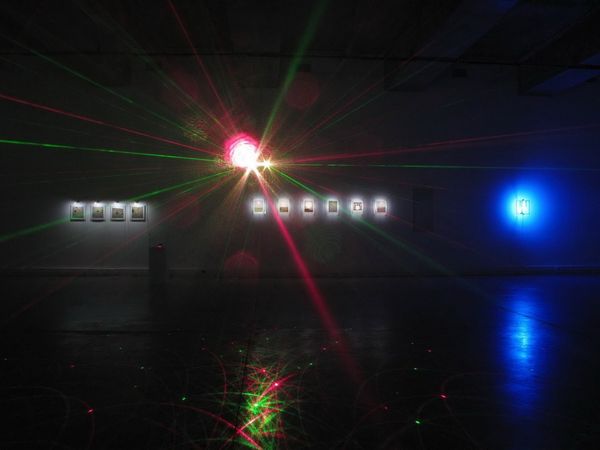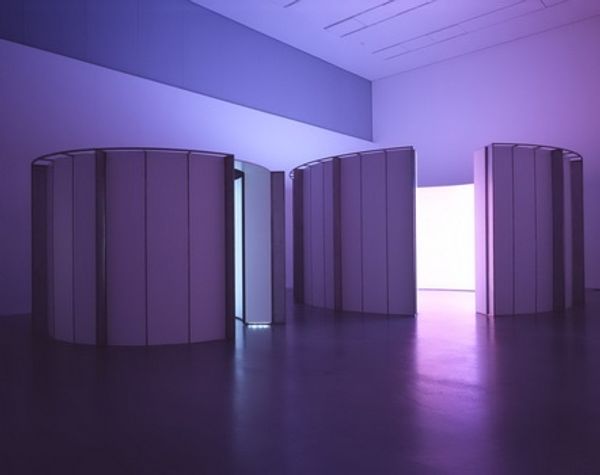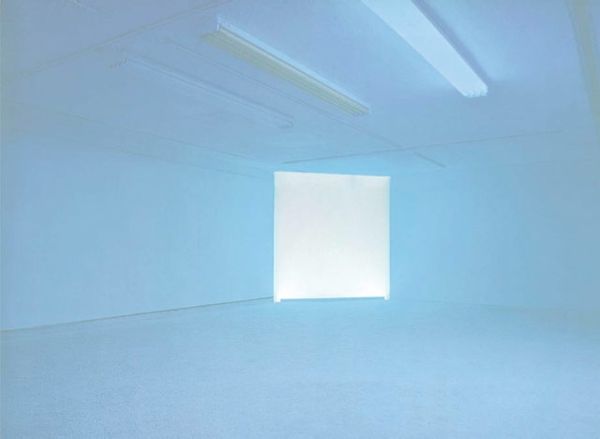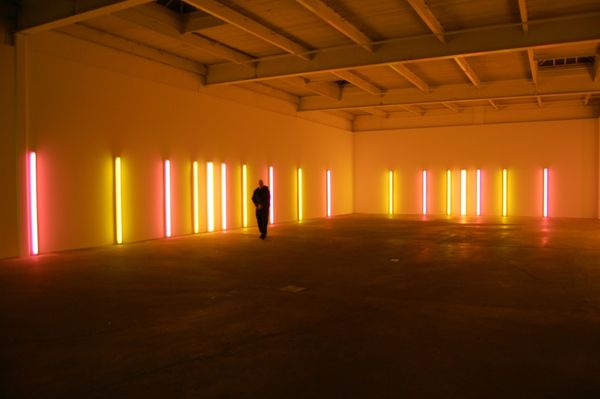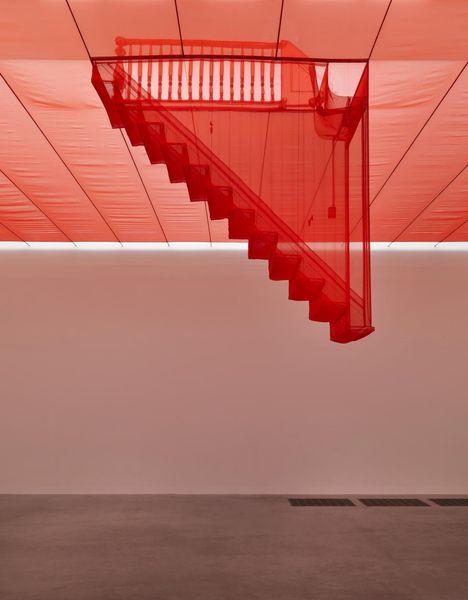
photography, ink, site-specific, installation-art
#
photography
#
ink
#
neo expressionist
#
pink
#
geometric
#
site-specific
#
installation-art
#
line
#
modernism
#
orange
Copyright: www.guiadegrancanaria.org
Francis Naranjo created this installation, “La Línea,” to address issues of division. The gallery space is bathed in an unsettling red light, invoking feelings of alarm and confinement. Naranjo is from Gran Canaria, Spain, part of the Canary Islands off the coast of Northwest Africa, and the piece speaks to the geographical boundaries and political realities of his homeland. Spain has a long history of colonialism and immigration, and Naranjo directly references the dividing lines of social class, race, and national identity that result. The lines themselves, created by low-lying lights, could be seen as physical barriers or borders, perhaps alluding to the borders between Europe and Africa, or the ways that the art world excludes non-European artists. As historians, we need to consider how the institution of the gallery space itself creates meaning. How does the clean, white-walled setting amplify or challenge Naranjo’s message? Researching Spanish colonial history as well as the history of the Canary Islands would help us better understand the complex issues this work raises.
Comments
No comments
Be the first to comment and join the conversation on the ultimate creative platform.
